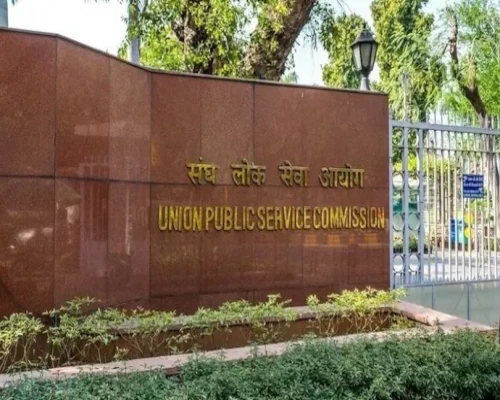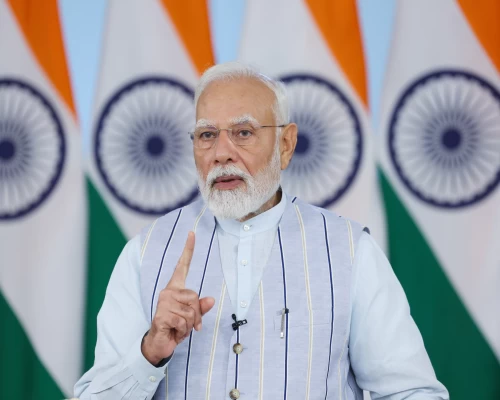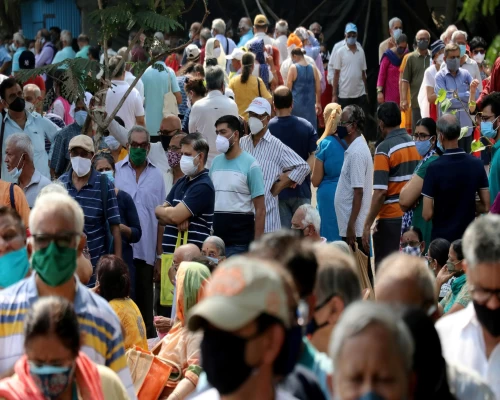
New Delhi: The Union Budget 2021-22 has endeavoured to lay the foundation of India’s mid-term growth trajectory. The Indian economy is currently at an inflection point – recovering steadily from the twin shocks of the pandemic and associated health measures. The fiscal expansion illustrated in the Budget was, therefore, imperative to give necessary ‘escape velocity’ needed for the Indian economy to overcome the ‘influence-sphere’ of once-in-a-century shock.
The fiscal deficit target, which indicates the borrowing requirements of the government, has been revised sharply upward to 9.5 per cent of GDP in FY21 RE, from 3.5 per cent of GDP in FY21 BE. While 30 per cent of this increase was attributed to a shortfall in revenue collection, the remaining 70 per cent was due to higher public expenditure during the year. On similar lines, a higher fiscal deficit target of 6.8 per cent has been set for FY22 BE. It is, therefore, evident that India has consciously adopted a counter-cyclical fiscal policy – expansionary during economic downturns and contractionary in good times).
Economic Survey 2020-21 had lucidly provided the intellectual anchor for adopting an active counter-cyclical fiscal policy, during a time of economic crisis such as the one we are witnessing. The various channels through which fiscal expansion cushions output contraction during economic downturns are: by boosting private investment and consumption through higher fiscal multipliers in recession; compensating for greater risk-aversion of private sector and bringing back animal spirits through risk multiplier; and instilling confidence through expectation multiplier as reflected in the surge in equity indices after Budget announcement. An RBI study corroborates this stance by estimating the fiscal multipliers in India – a one-rupee increase in capital expenditure by the Central government crowds in private investment, and increases output by 3.25 rupees (RBI Bulletin, April 2019).
A key highlight of this growth-centric Budget for FY22 has been the emphasis on quality of spending through a big push to public investments. The capex for FY21 has been revised to Rs 4.39 lakh crore in RE, and budgeted at Rs 5.54 lakh crore for FY22. This encompasses a year-on-year growth of 30.8 per cent in FY21 (FY21 RE over FY20 actuals), and 34.5 per cent in FY 22 (FY22 BE over FY21 BE). BE capex outlay for FY22 for major Infrastructure sector Ministries saw considerable growth over BE for FY21, that is, 53 per cent for railways, 32 per cent for road transport and highways, 21.8 per cent for housing and urban affairs.
The Economic Survey 2020-21 advocated such an expansionary fiscal policy stance with an emphasis on stimulating public investment, to credibly raise growth expectations, crowd-in private investment and thereby, unleash a virtuous circle. Expansion in public expenditure amidst an economic crisis is often accompanied by concerns regarding the sustainability of rising debt. Economic Survey 2020-21 addresses these concerns in the present scenario. The accumulation of Government’s debt can be understood through a simple identity of debt dynamics, whereby the change in debt-to-GDP ratio is directly proportional to the difference between interest rate and growth rate of the economy.
A negative interest rate-growth differential implies that output is growing at a rate higher than the rate of interest to be paid on debt. The higher this negative differential, the lower are the debt-to-GDP ratios, thus making it easier (and quicker) for the Government to ensure debt sustainability. This is akin to a simple investment made from borrowed funds – it is sustainable if it yields more return than the interest repaid on the principal amount.
The Economic Survey 2020-21, through extensive analysis, elucidates that for most of the years during the last two and a half decades in India, the GDP growth rates have been greater than the interest rates, resulting in a negative interest rate-growth differential, and thus causing the debt levels to decline. It, further, shows that with the interest rate-growth differential expected to be significantly negative for India in the foreseeable future, counter-cyclical fiscal policies may lead to lower, not higher, debt-to-GDP ratios.
Owing to the expected sharp increase in the borrowings (Fiscal deficit) during FY21, as reflected in the Union Budget 2021-22, the Central Government Debt to GDP ratio is expected to shore up in FY21. Even with this higher debt to GDP ratio, the simulations in the Survey show that debt sustainability may not be a concern for India-even in the worst-case scenario where India’s real growth rate is 3.8 per cent from FY 2023 onwards. A well-designed counter-cyclical fiscal policy during the crisis in the Union Budget 2020-21 has, therefore, emerged as a booster dose for the economy at this juncture. It will spur economic growth and thereby, pave the path for a self-financing fiscal policy and sustainable debt levels.
(The authors are IES officers serving in the Department of Economic Affairs. The views expressed are strictly personal)
ENDS













